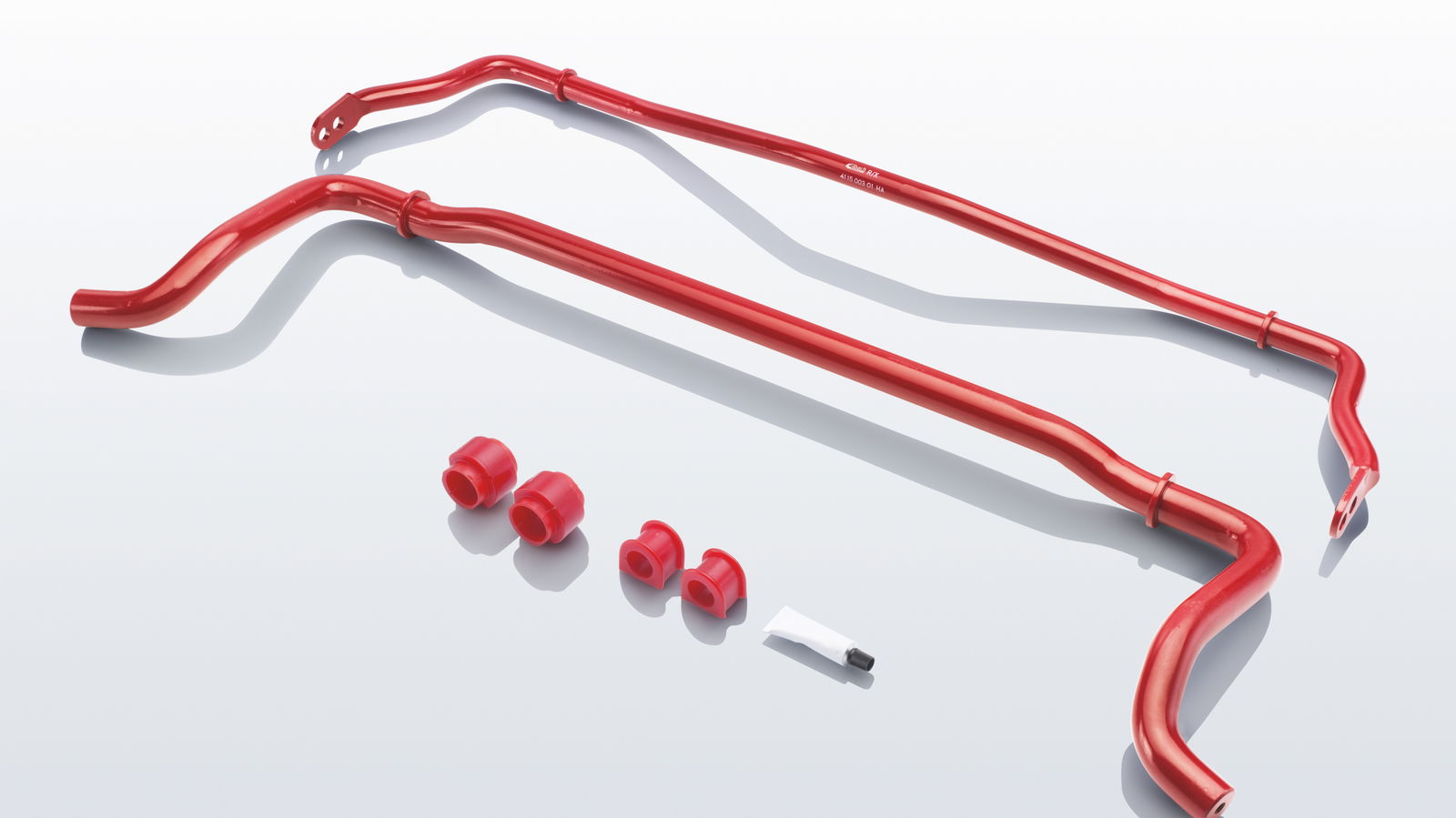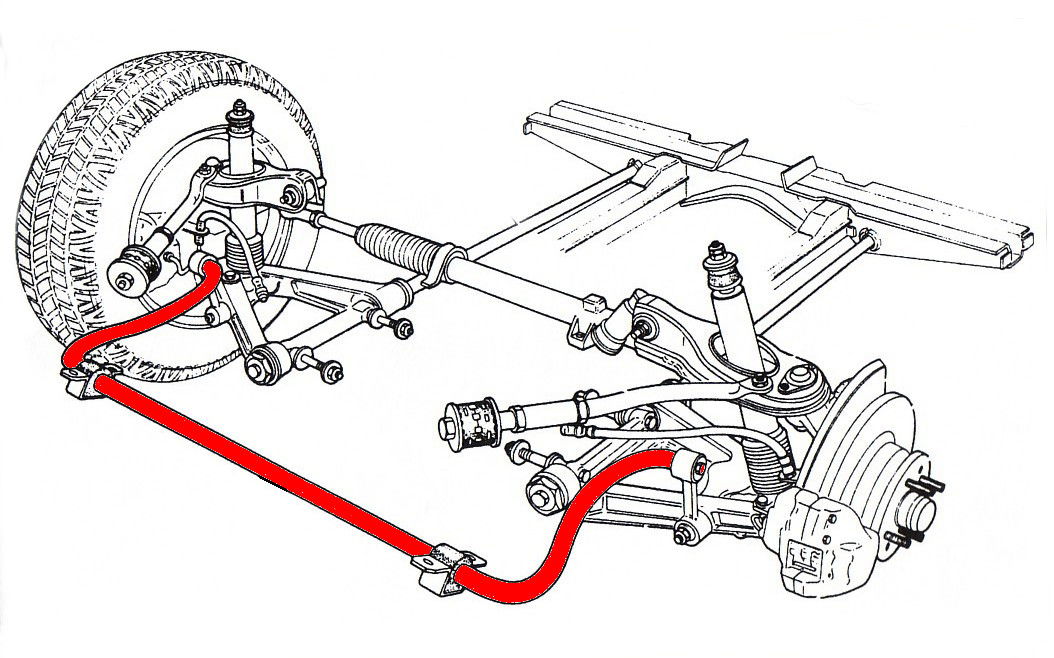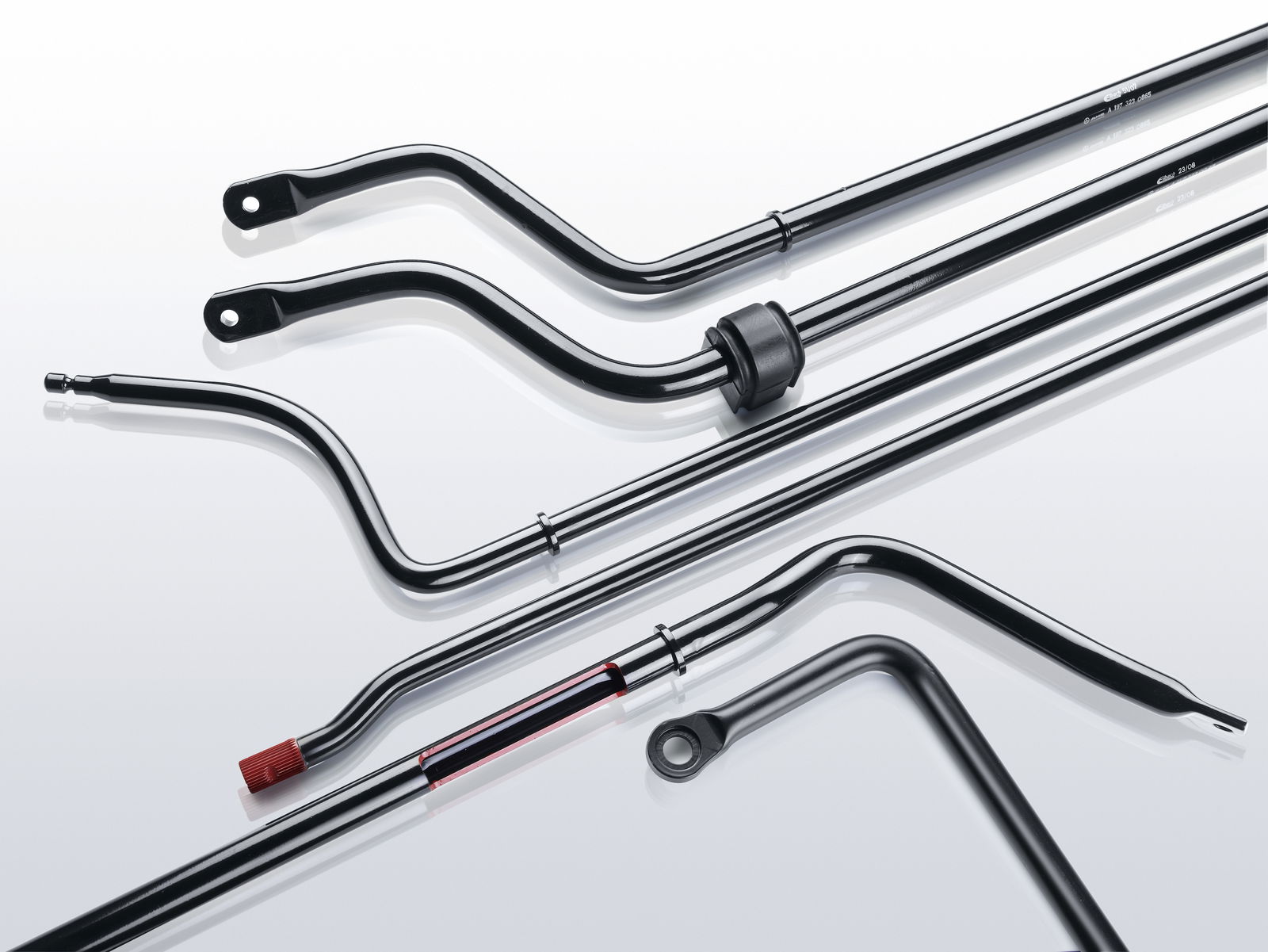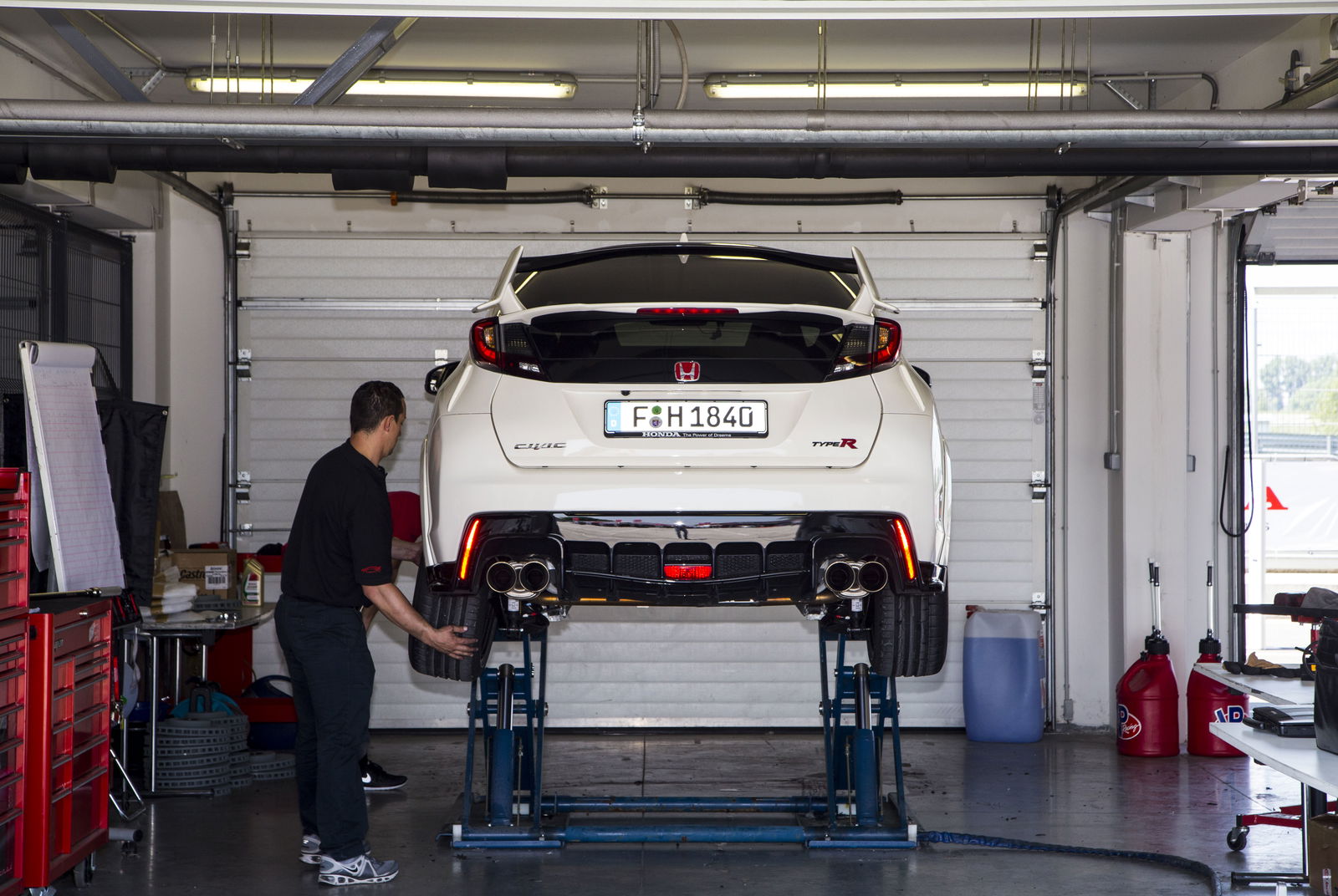How Do Anti-Roll Bars Actually Work?

The chances are you’ve heard of anti-roll or sway bars. And you probably know what they do - the clue is after all in the name: they combat body roll, duh. But how exactly?
The part itself is quite simple. It’s a U-shaped cylindrical length of metal (typically steel) that joins together the suspension either side of an axle generally via the control arms. It will usually be attached to the chassis in the middle at two points with rubber bushings. As for why you want one, we have to look at the joys of body roll.

During cornering, the sprung mass of the body will naturally be shifted towards the outer side of the car, otherwise known as body roll. This isn’t something you want - as the car leans the wheels start to tilt, reducing the contact patch of the tyres. Excessive roll also results in a car that isn’t as responsive, as it’ll take longer to react to your commands while trying to settle.
If you have an anti-roll bar fitted, the energy from the more heavily loaded side of the suspension will be transferred through the bar via a twisting force, effectively ‘pulling’ the wheel at the opposite side of the axle up towards the body. This won’t get rid of the roll entirely, but it will drastically reduce it by evening out the forces across an axle to an extent.

There is a downside, however: having one side of the suspension affected by what’s happening at the opposite end isn’t always ideal when a car is dealing with imperfections in the road. This is, after all, why independent suspension is normally considered to be the best setup. Adding an anti-roll bar into the mix is a compromise (albeit a necessary one most of the time), and it can introduce a jolting motion sent through the cabin that can be uncomfortable and make the car feel nervous. So, you don’t want the anti-roll bar to be too stiff - it’s a balancing act between comfort and performance.
Some manufacturers get around this problem - while also improving anti-roll bar effectiveness - by fitting an active system. This replaces the single part with two roll bars protruding from a central motor. Sensors monitor factors like steering angle and yaw, and when necessary, that twisting force we talked about earlier is applied electronically, lifting the less heavily-loaded wheel up and counteracting the roll.
In terms of modifying your car, aftermarket anti-roll bars can improve the cornering ability while also changing the balance of the car. For instance, stick a stiffer sway bar on the back of a front-wheel drive car, and you’ll reduce understeer, while a studier piece on a rear-wheel drive car will cut down on oversteer.
It’s important to note that a larger diameter anti-roll bar isn’t necessarily going to be more rigid, as some are hollow. The length and position of the lever arms can affect stiffness too. More commonly seen in the world of motorsport, adjustable anti-roll bars allow for these factors to be tweaked, giving a quick and easy way to adjust the balance of the car to the preferences of the driver.
In the realm of off-roading meanwhile, some choose to remove the sway bars entirely, allowing for much greater axle articulation.

Have you ever changed the anti-roll bars on your car? What did you go for, and why? Let us know in the comments.

Comments
Isnt it some sort of special steel they use in them to resist torsional twisting of the chassis that helps keep the suspension from going all crazy?
Thanks. I feel smarter
There are T-type and bladed arb-s as well, one gives you a lighter construction, and one gives you infinite adjustability
sway bar disconnects for me lol
“A studier piece on a rear-wheel drive car will cut down on oversteer. “
Not sure if you mean sturdier, but if you do then it is wrong. A sturdier ARB at the rear - if front unchanged - will always reduce understeer, no matter what drive it is.
It can, however, reduce the feeling of oversteer on power, because you straighten up the wheel faster.
aren’t they used in racing mostly for manipulating traction and shitt?
Fitted one to my little econobox! Works magic I promise you
Hi matt,
Sorry to say that but the aim and the how an antiroll bar/anti sway bar/stabiliser bar work is the almost total oposite of what you say :/
You can not talk about roll without ever mentioning roll center(suspension design) and center of gravity.
That’s the lever arm formed between the roll center (of a sigle axle) , in fact the roll axis (roll center of both axle) and the center of gravity.
The bigger the lever or the bigger the weight will produce bigger tendency to roll.
There is car without stabiliser bar that absolutly don’t produce roll , all the roll is contrôled by the springs (Ultima for exemple)
So for a given suspension desing and CG height Do i absolutly need a stabiliser bar to reduce roll?
No, you can controle that with the springs or .. spring aid (progresive bumpstop, yep take a look at how BMW Mini turns…)
The limit of using springs only is the natural frequency of the suspension, that greatly impact the comfort and the usable spring travel (comfort/control/tire traction)
So you can use a secondar spring that only play when corening hard enought => Bumpstops (for real! take mesurement if you don’t believe me ;) )
So why there is an stabilizer bar if you can do without?
Balance son!
Yep one the easiest way to tune balance (tendency to oversteer or understeer) is by staibliser bar!
And VERY contrary to what you said aa big stabilizer bar on the rear a FWD or a RWD will promote oversteer ;)
And a big at the front promote understeer.
Ok Why?
Because again contrary to what was said, the stabiliser bar DO NOT even tire load !!!!
In fact it does the complette oposite!
Like you said when you turn the car load the outside tire, the inside tire is less loaded as the outside is more.
With a stabilizer bar the inside tire is “lifted” off the groud so even more unloaded, that’s why the axle with “the big bar” will loose grip before the one with less corner stiffness which will even the load a bit more.
Ok so Why I feel the car so reactive to my imputs with big bar?
Because the load transfert is made faster ;)
That also happen with stiff springs and cornering on bumpstops :)
It’s not only a question of How much happens, it’s a How fast it happen too
Sorry for the looong post , but I couldn’t let other car enthousiast be in the wrong on that subject .
Oh,
And how can people talks about about active roll control without talking about the Citroën Xantia Activa ;)
just look how well it performe on the “ELK test” way faster than …. you will see , google it :D
yup went from 18mm front 16mm back to solid 25mm front and back on my volvo and it got a less understeer nature to the point where its almost neutral and the mirrors dont scrape during heavy cornering anymore xD